|

by Stephen Mehler
from
GizaPyramid Website
With recent discoveries of “new” spaces or chambers behind the
so-called “Gantenbrink’s Door” in the Southern Shaft and another
“door’ in the Northern Shaft of the Queen’s Chamber in the Great
Pyramid, interest in the ancient monument continues to capture the
imagination of many people in the world. Even Dr. Zahi Hawass,
Chairman of the Supreme Council of Antiquities of Egypt, has
remarked that the Great Pyramid has not yet yielded all of its
secrets by any means.
In fact, the inner chambers of the Great Pyramid exhibit many
anomalous features, which have never been adequately addressed or
discussed by Egyptologists such as Hawass. In his landmark book,
The Giza Power Plant (Bear & Co., 1998), engineer Chris Dunn made the
suggestion there is evidence that the Great Pyramid may have
experienced a cataclysmic event, an explosion some time in its
distant past which ended its role as an active power plant, a
machine, which is what Dunn proposes was its primary function in his
book. I further advanced Dunn’s hypothesis of an explosion in the
pyramid in my book,
The Land of Osiris (Adventures Unlimited Press,
2001) due to investigations I made on site in 1997, 1998 and 1999.
My recent trip to Egypt as a presenter at the “Mysteries of The
Spirit” Conference that was held at the Mena House near the Giza
Plateau in January 2003 enabled me to further pursue the hypothesis
and gather even more evidence, not only in the Great Pyramid, but at
other sites as well.
There are several features in the inner chambers of the Great
Pyramid that cannot be explained by the structure merely being
utilized as a tomb for a king, whether an actual or symbolic tomb.
As mentioned in both my and Chris’s book, the King’s Chamber
presents several anomalies. There are cracks in the granite beams on
the southeastern ceiling of the room. I first noticed these cracks
in 1992. Egyptologists have explained the cracks away as being the
result of an earthquake, but there is no evidence of seismic damage
in either the Descending Passage or Subterranean Chamber, which
would have been closer to the epicenter. The SCA (Supreme Council of
Antiquities) attempted to repair these cracks in 1998 but they are
still evident today.
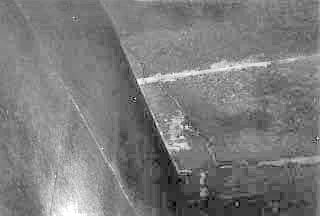
Cracks in granite beams in ceiling of King’s Chamber 1992
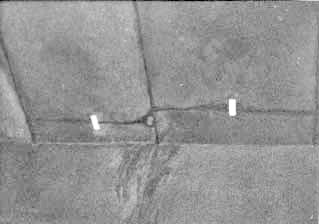
Cracks in granite beams in ceiling of King’s Chamber 2003
The walls of the King’s Chamber can be seen separating from the
floor and seem to bulge out, suggesting that an explosion or
powerful energy pulse acted upon them. Chris Dunn is also the only
investigator to remark that the stone box in the King’s Chamber
(erroneously referred to as a “sarcophagus”) is today a chocolate
brown color, not the original rose color of the Aswan granite it is
from. The color change could be due to tremendous heat, which could
indicate it was chemically altered by an explosion or fire in the
chamber in antiquity. If a sample of the box could be obtained, it
could be tested to determine if this was so.
There are other anomalies to be found in the Grand Gallery. First
discovered by Chris Dunn in May of 1999 when we were in Egypt
together, the upper wall of the Grand Gallery, near the entrance
into the King’s Chamber, is made of granite, not limestone. The
entire wall shows deep dark stains that may be the result of being
exposed to tremendous heat, perhaps from an explosion.
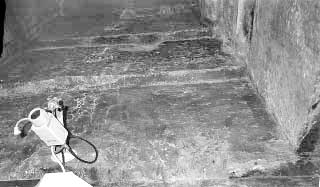
Upper Wall of Grand Gallery, made of granite, not limestone.
Wall
shows charring and is blackened, not original rose color of granite,
2003
Along the side ramps of the gallery are several rectangular holes or
sockets, evenly spaced throughout the entire distance of the ramps.
Some Egyptologists, such as Mark Lehner and Zahi Hawass, have
speculated that statues of Khufu, the supposed builder of the Great
Pyramid, were situated in these holes, but no evidence of any
statues has ever been found in the pyramid.
Chris Dunn has
speculated that some sort of devices, perhaps Helmholtz Resonators,
may have been inserted in these slots to amplify the energy produced
in the pyramid. There is evidence that these resonators, or some
other devices, may have exploded during the proposed cataclysmic
event that occurred in the pyramid as there are burn or scorch marks
on the ceiling of the Grand Gallery directly above and corresponding
to the slots on the side ramps. This also may be why no traces of
the resonators have also ever been found.
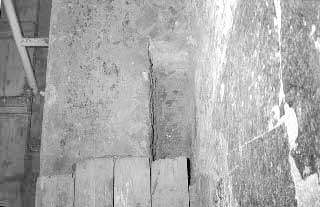
One of the rectangular slots in side ramps along walls of Grand
Galley 2003
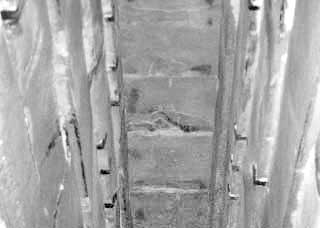
Ceiling of Grand Gallery showing burn marks corresponding to slots
on side ramp 2003
In January of 2003, I discussed the possibility of an
accident/explosion having occurred in the Great Pyramid in antiquity
with my Egyptian teacher, indigenous wisdom keeper Abd’El Hakim
Awyan. While not specifically mentioning an explosion in the
pyramid, Hakim stated that his tradition does record (orally) that a
cataclysmic event occurred thousands of years ago on a global scale,
an event that may have been sparked by a cometary flyby, a meteor
strike or some other celestial/geosynchronous activity. Although
Hakim does not often deal with exact dates, I believe this event may
have occurred around 11,500 years ago as stated by Barbara Hand Clow
in her book, Catastrophobia (Bear & Co., 2001).
In my book, The Land of Osiris, I mentioned a series of sites in
prehistoric Egypt, from Dahshur in the south to Abu Roash in the
north, and including Sakkara and Giza. These sites were all
interconnected and linked by stone masonry pyramids and temples, and
were all erected over 10,000 years ago according to the indigenous
wisdom keepers of Egypt. I mention that the site of Abu Roash, some
five to eight miles north of Giza, once had a pyramid, which is all
in ruins today.
Egyptologists state that the pyramid was unfinished
and therefore is insignificant, but my research indicated otherwise.
Where I once thought the pyramid had been attacked and quarried by
Arabs in the last few hundred years seeking stone to rebuild mosques
damaged by earthquakes, I now speculate that the pyramid may have
been destroyed in the same aforementioned cataclysmic event. Abd’El
Hakim now also believes that this was the case.
|
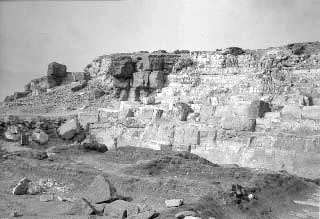
Abu Roash.
All that remains of once intact pyramid.
1997
|
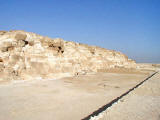
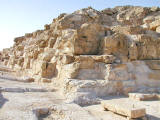 |
Recent investigations at the
Bent Pyramid at Dahshur also revealed
some possible evidence to support this explosion hypothesis. The
northwest corner of the pyramid, also believed by Egyptologists to
have been recently quarried, appears to have been blown away as if
from an explosion. The pyramid shows uneven loss of stone,
inconsistent with systematic quarrying. Most of the original casing
stones are still intact, yet this one side seems to be blown off.
|
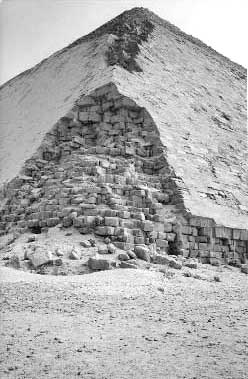
Dahshur.
Northwest side of Bent Pyramid, which may have been blown
off.
2003
|
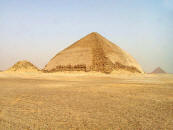
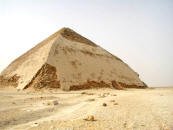
 |
A cataclysmic event in antiquity, proposed by many authors as having
occurred around 11,500 years ago, whether celestial as a comet or
meteor strike, planetary near miss, or even an ancient global war as
suggested by David Hatcher Childress and
Zecharia Sitchin, may have
affected all the stone masonry pyramids on the gridline that I have
labeled The Land of Osiris, approximately 25 square miles from
Dahshur to Abu Roash. The evidence presented that can be found in
the Great Pyramid does indicate that the inner chambers of the
monument were once subjected to great heat and/or an explosion which
caused the great 70 ton granite beams in the ceiling of the King’s
Chamber to crack.
This evidence, obvious when carefully observed,
cannot in any way be explained or accounted for by merely dismissing
the monument as being a tomb for a king constructed 4500 years ago.
There needs to be more independent holistic study by scientists and
researchers of varied disciplines concerning these anomalies
mentioned to determine, if possible, whether an explosion did indeed
occur in the Great Pyramid in antiquity. There is enough evidence
presently to bring into serious question the whole assumption of the
pyramid being constructed as a tomb for a king in 2500 BC.
|












